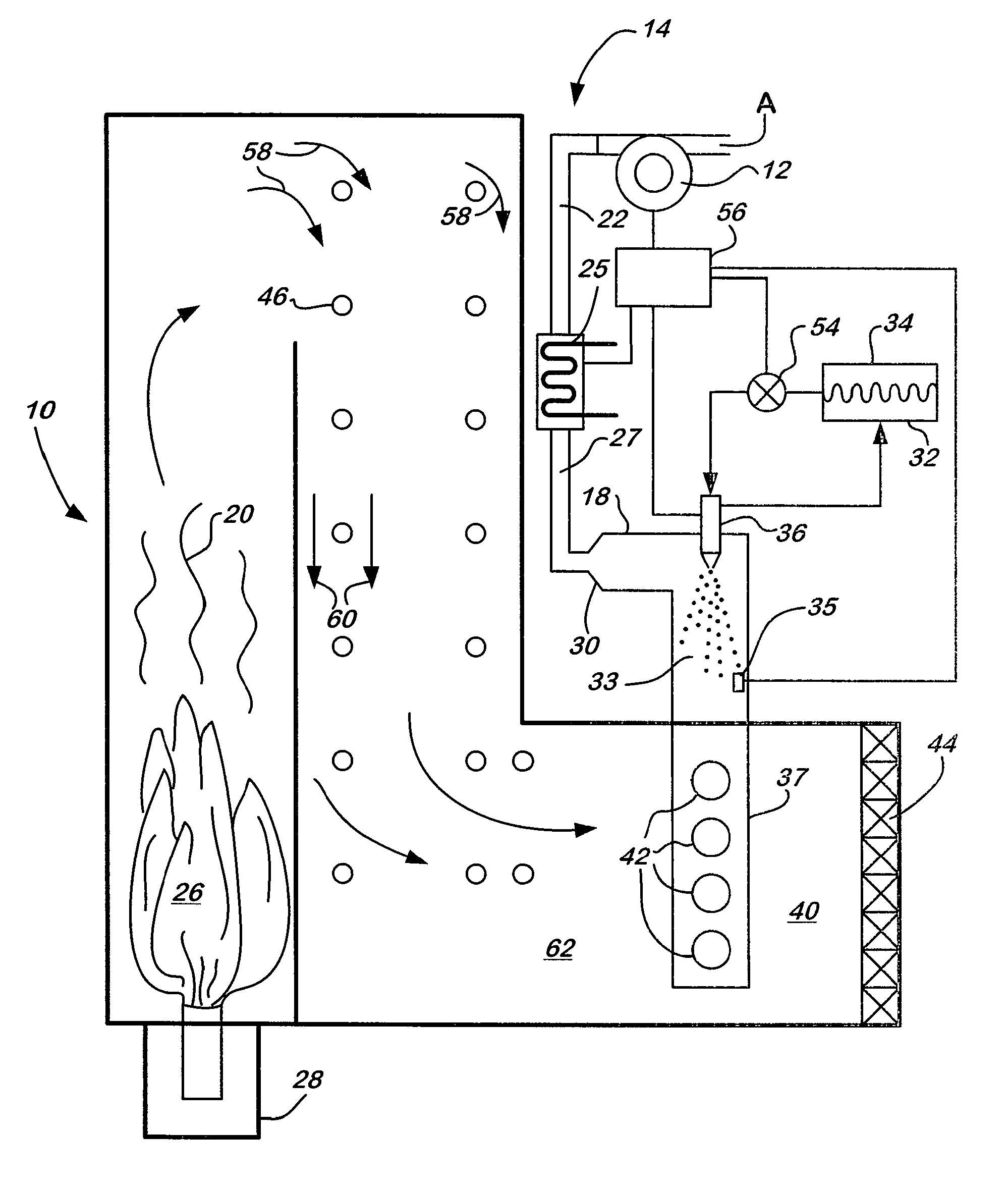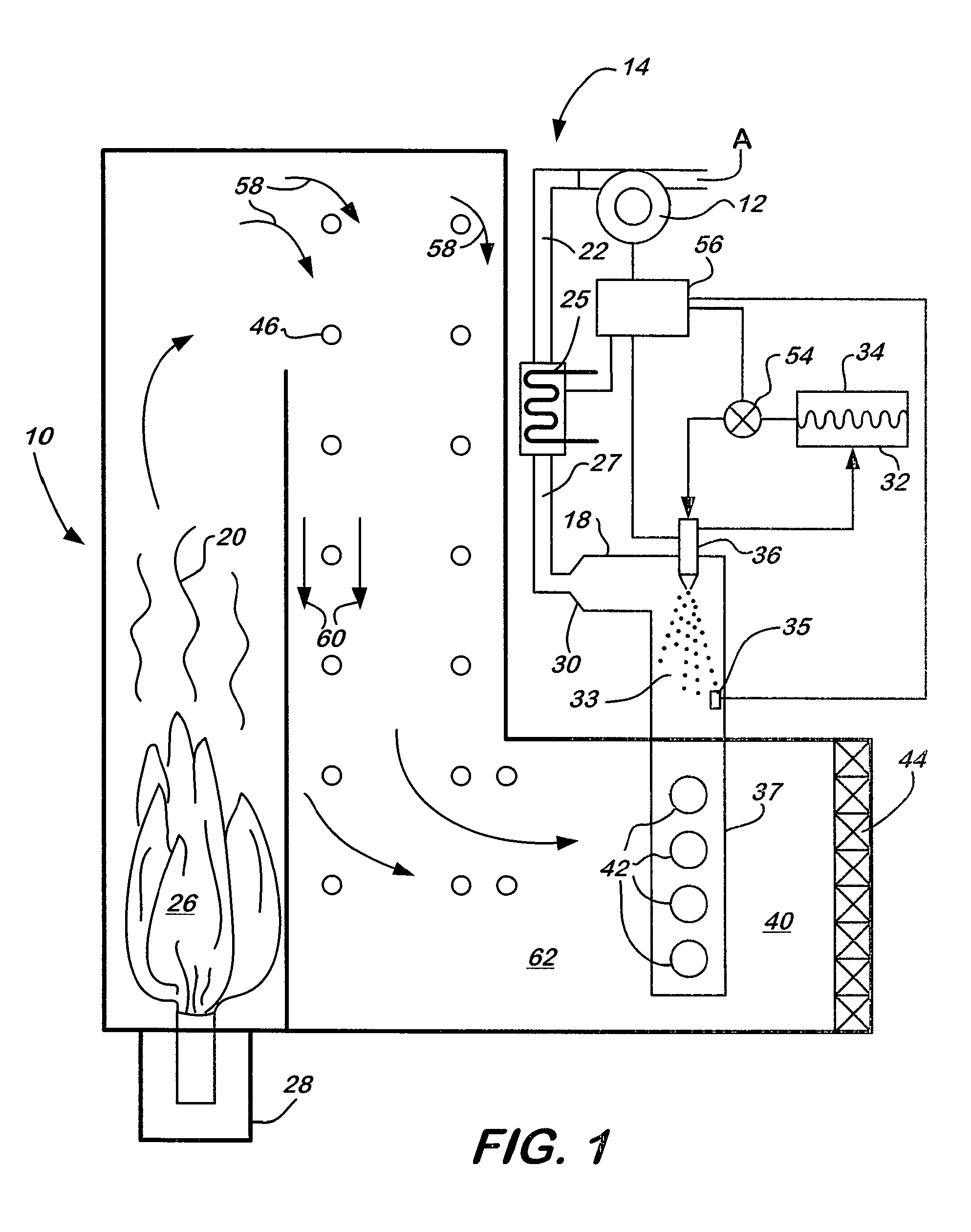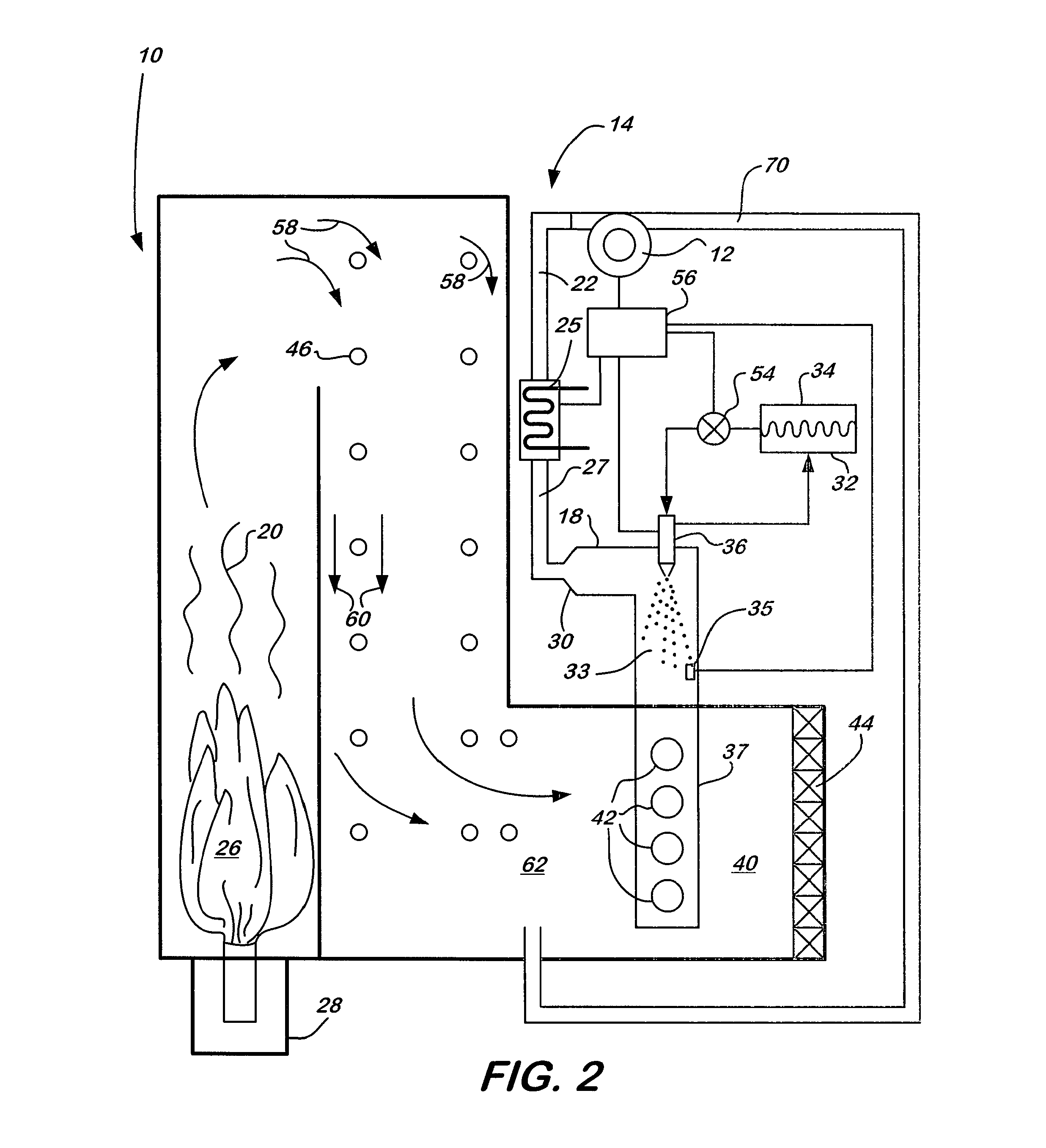Method for urea decomposition and ammonia feed to a selective catalytic reduction system
a catalytic reduction and ammonia feed technology, applied in the direction of separation process, dispersed particle separation, chemical apparatus and processes, etc., can solve the problems of nox emissions from small industrial, commercial and electric utility boilers and other lean burn stationary combustion sources, yamaguchi does not address the time required for complete decomposition and gasification of an aqueous solution of urea, and the use of steam from a boiler has a penalty, so as to reduce the cost of supplemental power
- Summary
- Abstract
- Description
- Claims
- Application Information
AI Technical Summary
Benefits of technology
Problems solved by technology
Method used
Image
Examples
example 1
[0042]A slipstream of exhaust gas from a lean burn combustion engine is directed to an injection portion of a continuous duct. The slipstream flow rate is 300 scfm at a temperature of 700° F. to 750° F. The exhaust gas in the primary exhaust and in the slipstream contains 1100 ppm of NOx. The slipstream is connected to an injection portion (18) and a decomposition portion (33) of a continuous duct (14) that is 5″ in diameter. An aqueous solution of 32.5% urea is injected in the inlet end of the injection portion (18) of the continuous duct (14) using a solenoid actuated return flow injector as described in U.S. Pat. No. 7,467,749 to Tarabulski et al., the contents of which is hereby incorporated by reference herein. A computer based TRIM-NOX® injection system as commercially available through Combustion Components Associates Inc. with an injection pump, filter, day tank, pressure sensor and touch screen display is used to inject the aqueous reagent at a rate of 0.5 to 0.75 gallons / h...
example 2
[0045]A fan is used to supply ambient air to a 60 Kw electric heater. The fan and heater deliver 300 scfm of air at a temperature of 700° F. to 750° F. to a 5″ diameter continuous duct having an injection portion (18) and a decomposition portion (33). A 32.5% solution of aqueous urea reagent is injected into the injection portion (18) of the continuous duct (14) using a solenoid actuated return flow injector and system as described in Example 1.
[0046]The outlet of the decomposition portion (33) of the continuous duct (14) is connected to the AIG (37) and catalyst (44) arrangement as described in Example 1. The full exhaust flow from a lean burn combustion engine is passed through the catalyst reactor at a rate of 1100 scfm to 1200 scfm and a temperature of 750 F with a NOx concentration of 1100 ppm. Injection of 0.5 to 0.75 gph of aqueous solution into the injection portion (18) of the continuous duct (14) reduces the NOx out of the SCR reactor to 100 ppm indicating that the urea re...
PUM
| Property | Measurement | Unit |
|---|---|---|
| temperature | aaaaa | aaaaa |
| residence time | aaaaa | aaaaa |
| residence time | aaaaa | aaaaa |
Abstract
Description
Claims
Application Information
 Login to View More
Login to View More - R&D
- Intellectual Property
- Life Sciences
- Materials
- Tech Scout
- Unparalleled Data Quality
- Higher Quality Content
- 60% Fewer Hallucinations
Browse by: Latest US Patents, China's latest patents, Technical Efficacy Thesaurus, Application Domain, Technology Topic, Popular Technical Reports.
© 2025 PatSnap. All rights reserved.Legal|Privacy policy|Modern Slavery Act Transparency Statement|Sitemap|About US| Contact US: help@patsnap.com



